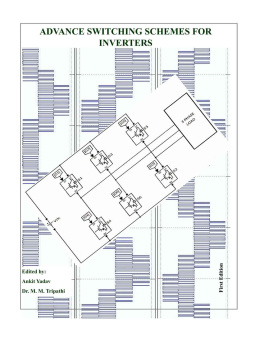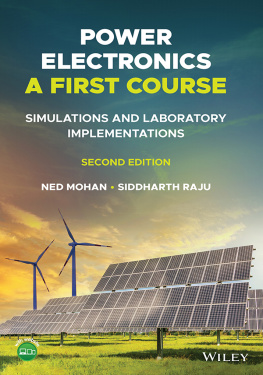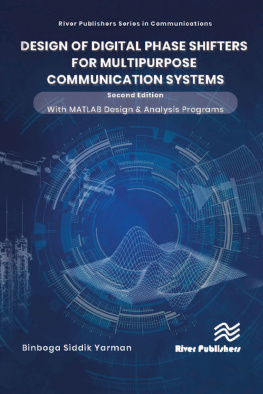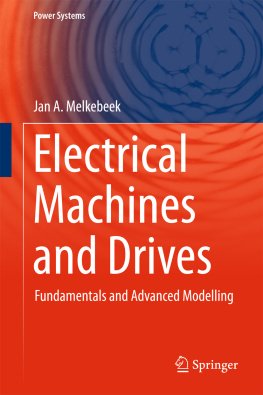Advance Switching Schemes for Inverters
First Edition
Edited by:Ankit Yadav and M. M. Tripathi"Dedicated to our teachers, parents and grandparents"
PREFACE
DC-AC Inverters are key components in various industrial applications that include power
DC-AC Inverters are key components in various industrial applications that include power phase & 3-phase) are finding more attention in renewable energy systems also. Theseinverters are big source of harmonics, which leads to various other problems like heating of instruments, faulty operation of protection devices etc. The harmonics generated byinverter can be controlled and minimise by controlling the switching of the device. Severalapproaches has been made already to deal with this problem like as carrier based PWM(pulse width modulation), selected harmonic elimination, Random PWM etc.
Although the methods named above have been succeeded in improving the quality ofpower by reducing harmonics but the problem is still not solved completely, so it still required attention. The book presents the design of new switching schemes for single phase and three phase Voltage Source DC AC inverters. Modified hysteresis switching schemeas well as wavelet based modulation technique are analysed and applied for switching of single phase and three phase voltage source inverters to produce significantly improved fundamental components and low harmonic contents.
Ankit Yadav
M. M. TripathiABOUT AUTHORS
Ankit Yadav
Ankit Yadav is Sr. Project Associate in Indian Institute of Technology (IIT) Kanpur, UttarPradesh, India. He received his B. Tech. (Electrical and Electronics Engineering) fromUttar Pradesh Technical University, Lucknow, India and M. Tech (Power system Engineering) from Delhi Technological University (DTU), New Delhi, India. He hasworked with JK Lakshmipat University, Jaipur, India. His area of interest is power electronics and power system.
M. M. Tripathi
Madan Mohan Tripathi is Associate Professor in Delhi Technological University, New Delhi, India. He has done his B. E. (Electrical Engineering) from Madan Mohan MalviyaEngineering College, Gorakhpur, India and Ph. D. (Electrical Engineering) from G. B.Technical University, Lucknow, India. He has worked with Institute for Plasma Research, Gandhinagar, India and National Institute of Electronics & Information Technology(NIELIT), Delhi, India. His research interests include sustainable energy, power system restructuring, AI application to power system problems and application of IT in powersystem control and monitoring. He is a member of Plasma Science Society of India (PSSI),IEEE and IETE.
INDEX
Heading Page No.
1.0 Switching Schemes for Inverters8
1.1 Introduction8
1.2 Basic Concept of Converter10
1.2.1 AC DC Converter10
1.2.2 DC AC Converter (Inverter)10
1.2.3 Firing Angle11
1.3 Drawback of Power Electronic Devices11
1.4 Existing Switching Schemes 16
1.4.1 Pulse Width Modulation 16
1.4.2 Selected Harmonic Elimination18
1.4.3 Hysteresis Band Current control19
1.4.4 Other Switching Techniques19
1.5 Summary 19
1.6 References20
2.0 Introduction to Wavelets23
2.1 Introduction23
2.2 Types of Wavelets24
2.2.1 Haar24
2.2.2 Daubechies24
2.3 Wavelet Transform25
2.4 Multi Resolution Analysis (MRA)26
2.5 Scaling Function27
2.5.1 Sampling27
2.5.2 Reconstruction27
2.6 Summary 28
2.7 References28
3.0 Modified Hysteresis Switching Scheme for 1- phase Voltage Source Inverter30
3.1 Introduction30
3.2 Distinct features of modified Hysteresis Switching Scheme31
3.2.1 Block Diagram of modified Hysteresis Switching Scheme31 3.2.2 Reference Signal32 3.2.3 Problems and Modification34
3.3 Implementation36
3.4 Testing, Results and Discussion39 3.4.1 Linear load (R L load)40 3.4.2 Dynamic load (Motor load)42
3.5 Summary 49
3.6 References49
4.0 Modified Hysteresis Switching Scheme for 3-phase Voltage Source Inverter51
4.1 Modified Hysteresis Switching Scheme for three-phase Inverter51
4.2 New Switching Strategy51
4.2.1 Reference Signal52
4.3 Implementation53
4.4 Simulation Results and discussion57 4.4.1 Linear load57 4.4.2 Nonlinear load64
4.5 Summary 72
4.6 References73
5.0 Wavelet Modulation for single-phase Inverter75
5.1 Modulation Overview75 5.1.1 Reference Signal75 5.1.2 Output Waveform75 5.1.3 Sampling and Reconstruction 76 5.1.4 Flowchart77
5.2 Wavelet Modulation78
5.3 Modeling and Simulation 80
5.4 Results and Discussion80 5.4.1 R L Load81 5.4.2 R Load87
5.5 Summary 93
5.6 References93
CHAPTER 1
Switching Schemes for Inverters
1.1Introduction
The world's first power system was built at Godalming in England, in 1881 and in last 130years, it has become the backbone of worlds civilization, with enormous number ofexisting power system, where each individual system is having an ocean of generatingunits, loads, and other essential equipment. In current scenario, the world cannot dare tosurvive without electricity, as it was few centuries back.
In the beginning of power system network, elements like as generating units, loads,transmission network were less in number, as well as they were less sensitive to thedisturbances. So, the quality of power was not a big issue, as it is today. In todays era oftechnology the power network has expanded drastically and is full of electronic and power electronic devices which are highly sensitive to the disturbances in system. In the same period need of more and more energy is leading us to look for various renewable sources to fulfill energy requirements of society. These energy sources are operating in grid connected or off-grid mode. Power supply from these renewable resources are not pure sinusoidal and its conversion to sinusoid injects large amount of harmonics in system and thus deteriorate the quality of power supply. Also now-a-days, reliability of power supply has become need of hour. Considering the above issues, quality of power supply has emerged as a serious concern in front of the engineers involved in power system technology.
Power electronic devices have shown their ability to control the power flow with greater flexibility and so, their use in power system is increasing day-by-day. With increasingnumber of power electronic devices to manage the expanding power system network, studyof controlling these devices requires attention. All the power electronic devices being usednow a days are dependent on the gate pulse & firing angle for any type of control, or we can say, only by controlling gate signal, we can control the behavior of our powerelectronic devices and thus the power system network.
The operation of these devices are controlled by gate signals and thus the output, harmonic, efficiency and other factors can be controlled by controlling gate signal. Poor switchingschemes of these power electronic devices may result in degradation of quality of power flowing through wires and in to the systems. A proper switching strategy can give an efficient and better control over output of power electronics device leading to better qualityof power. Several factors of operation that must be taken care while designing switchingstrategy are as follows.
a.RMS values of voltage and current
b.Average and Peak value of voltage and currentc.Total harmonic distortion (THD) waveforms d.Switching losses
e.Practical implementation
Work on switching strategy of power electronic switching devices came in to existencewith birth of power electronics and has resulted in several options such as single pulse switching, pulse width modulation (PWM), random PWM (RPWM), selected harmonic elimination (SHE), delta modulation, hysteresis & variable band, optimal PWM. Thereason behind development of all these methods is to minimize switching losses and higher order harmonics because the power electronics devices are major source of these higher order harmonics. From all these methods, PWM has been widely accepted because of itssimplicity and ability to solve the problem significantly. Although PWM has proven a better option, there is still a scope of improvement, as the problem is not eradicatedcompletely.










![switching.social [switching.social] - The Switching Social Handbook](/uploads/posts/book/131346/thumbs/switching-social-switching-social-the-switching.jpg)